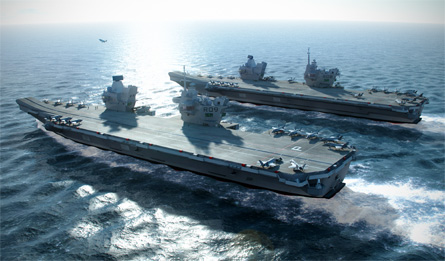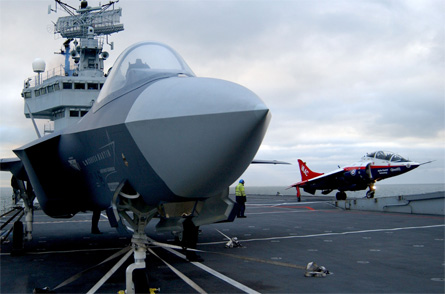Lockheed Martin has received a $13 million contract to incorporate a shipborne rolling vertical landing (SRVL) capability with the short take-off and vertical landing F-35B, with the work to be performed on behalf of the UK.
The US Navy announced details of the Joint Strike Fighter award on 6 October, just two weeks before the UK's coalition government will disclose the details of its Strategic Defence and Security Review (SDSR) process. This has assessed the nation's long-term military requirements, including major equipment acquisitions such as the F-35 and two future aircraft carriers.
 |
|---|
© BAE Systems |
Lockheed will be the main recipient of work under the new deal, with a 58% stake. BAE Systems will get 35% and Northrop Grumman 7%, the US Department of Defense says, with work to be completed by October 2013.
Developed by the UK, the SRVL technique will enable the F-35B to return to an aircraft carrier's deck carrying more weapons or fuel than possible when making a vertical landing.
Approaches would typically be flown at 60-70kt (111-129km/h) and with a flight path angle of 6-7°. An algorithm is used to calculate the optimum approach profile for given sea conditions, while the best landing point will be highlighted by using deck lighting.
Qinetiq has supported previous development work, including the use of its VAAC Harrier demonstrator aboard the Royal Navy aircraft carrier HMS Illustrious (below).
 |
|---|
© Qinetiq |
A research simulator installed at the UK Ministry of Defence's Boscombe Down site in Wiltshire has also been used to model the SRVL performance of the F-35B with the UK's 65,000t Queen Elizabeth-class future aircraft carrier design.
The US Marine Corps has also shown interest in potentially using the SRVL technique with its own F-35B fleet.
The UK should receive its first of three test examples of the F-35B next year. It has previously outlined a Joint Combat Aircraft requirement for up to 138 production examples for the Royal Air Force and Royal Navy, but the SDSR could potentially reduce this number in the face of massive budgetary pressure.
Source: Flight International
















